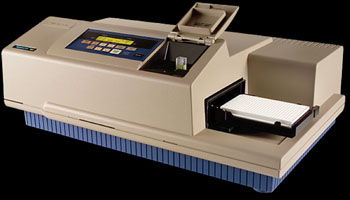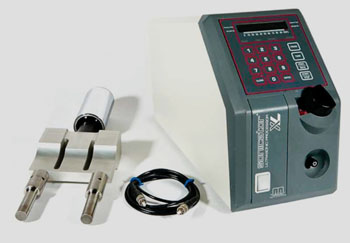Enzyme Assay on Impregnated Filter Paper Detects Krabbe Disease
By LabMedica International staff writers
Posted on 27 Jan 2015
Krabbe disease (KD) is an inherited lysosomal storage disease (LSD) caused by the deficiency of galactocerebrosidase (GALC) and is characterized by a severe and progressive leukodystrophy with death frequently before one year of life.Posted on 27 Jan 2015
Dried-blood filter paper (DBFP) samples have been increasingly used for lysosomal enzyme assay and some lysosomal enzymes could not be tested in DBFP samples using fluorometric assays, including GALC, heparan-sulfamidase and a few others.
Medical Geneticists at the Hospital de Clínicas de Porto Alegre (Brazil) obtained leucocytes from healthy individuals and confirmed KD patients. Dried-leukocytes filter paper (DLFP) samples were prepared by diluting a pellet of leukocytes in distilled water and the solution was mixed, sonicated on ice bath in a Misonix Sonicator XL2020 (Qsonica; Newtown, CT, USA). After incubation with suitable substrates supernatants were measured on SpectraMax M2 spectrofluorometer (Molecular Devices; Sunnyvale, CA, USA).
When GALC activities in DLFP and their corresponding leukocyte samples were compared, it is possible to see a close correlation in the respective KD groups. The healthy control group showed higher values of activities in DLFP, possibly due to some degree of protein retention in the filter paper in the dilution process. The investigators did not visualize this effect in the KD samples, probably because the fluorescence of these samples is very low. Nevertheless, the assay in DLFP allowed the correct identification of KD patients in all cases.
The authors concluded that the assay of GALC on DLFP is a reliable and useful method for the identification of KD. As sample preparation is feasible in standard biochemical laboratories and as transportation is very simple, it could enable patients living in remote areas to be investigated and diagnosed. The study was published on January 1, 2015, in the journal Clinica Chimica Acta.
Related Links:
Hospital de Clínicas de Porto Alegre
Qsonica
Molecular Devices















